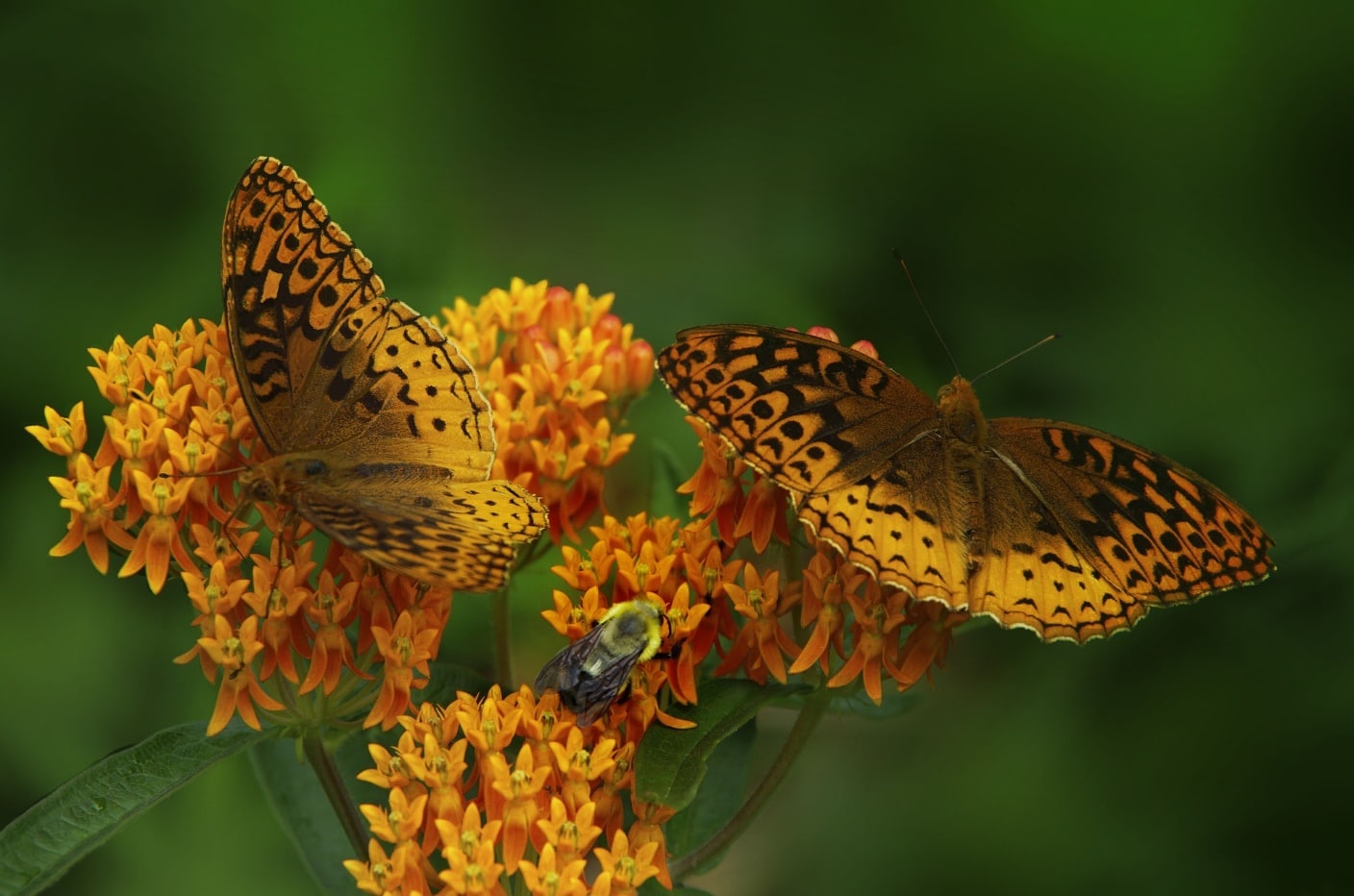At this time of the year, there is still much work to be done in preparing the gardens for the winter to come. Where possible, seed has been collected and is being cleaned for sowing in the future. I cut back the gardens of spent perennial plants. I don’t rake the fallen leaves from the garden beds. I usually leave them on as mulch to protect the perennial plants over winter. I do rake the trails and the lawn areas. Those leaves are shredded for use as mulch next spring and I protect the mulch by covering it with white plastic. Without the coverings, the mulch becomes wet, heavy and hard to move.
In my home garden, I do the same thing – except I shred the leaves with my lawn mower rather than with a large, heavy duty shredder. Once I have mowed the leaves I put a nice thick layer of shredded leaves on the garden in place of leaving the whole leaves. This saves me a little time in the spring when it is time for the plants to start anew.
In some cases, especially for evergreen ground covers or the rose garden, I collect pine boughs for winter mulch. By placing the boughs over the plants it helps to deflect the harsh winter winds that desiccate the foliage and burn the crowns.
Winter mulch – like the mulch I put on my garden – should not be placed until the ground is actually frozen. Nice shredded leaves and pine boughs on the unfrozen soil make a perfect location for mice to nest for the winter. They collect and shred paper, leaves, cloth – anything they can find – and build a nest close to the plants you are trying to protect. Then they will proceed to eat your garden plants all winter long. By waiting until the ground is frozen to add winter mulch, the garden area is less welcoming and less hospitable to these woodland creatures.
Clean up your garden beds. Rake the lawn to remove the leaves that have all fallen. Wait until the garden bed is well frozen before protecting those sensitive plants so as not to invite vermin that will damage your plants rather than protecting them.
[column size=”1/2″] [lightbox link=”http://norcrosswildlife.org/wp-content/uploads/2015/11/bearberry.arctostaphylos_uva-ursi21.jpg” thumb=”http://norcrosswildlife.org/wp-content/uploads/2015/11/bearberry.arctostaphylos_uva-ursi21-320×200.jpg” width=”320″ align=”right” title=”Leaf litter among bearberry (Arctostaphylos uva-ursi)” frame=”true” icon=”image” caption=”Leaf litter among bearberry (Arctostaphylos uva-ursi)”] [/column] [column size=”1/2″ last] [lightbox link=”http://norcrosswildlife.org/wp-content/uploads/2015/11/oconee_bells.shortia_galacifolia21.jpg” thumb=”http://norcrosswildlife.org/wp-content/uploads/2015/11/oconee_bells.shortia_galacifolia21-320×200.jpg” width=”320″ align=”left” title=”Pine needles and oconee bells (Shortia galacifolia)” frame=”true” icon=”image” caption=”Pine needles and oconee bells (Shortia galacifolia)”] [/column]


